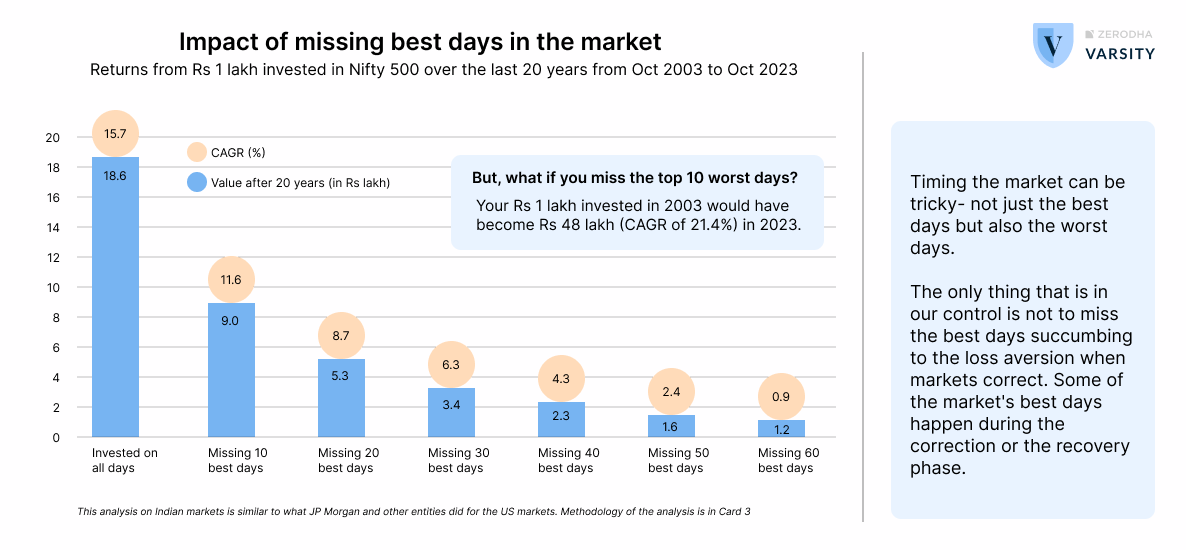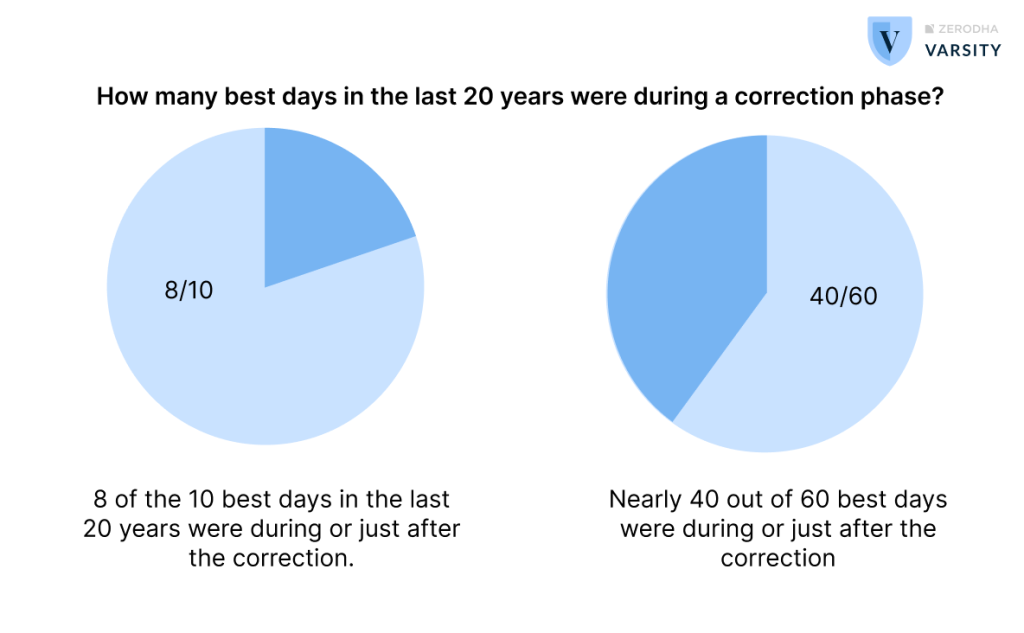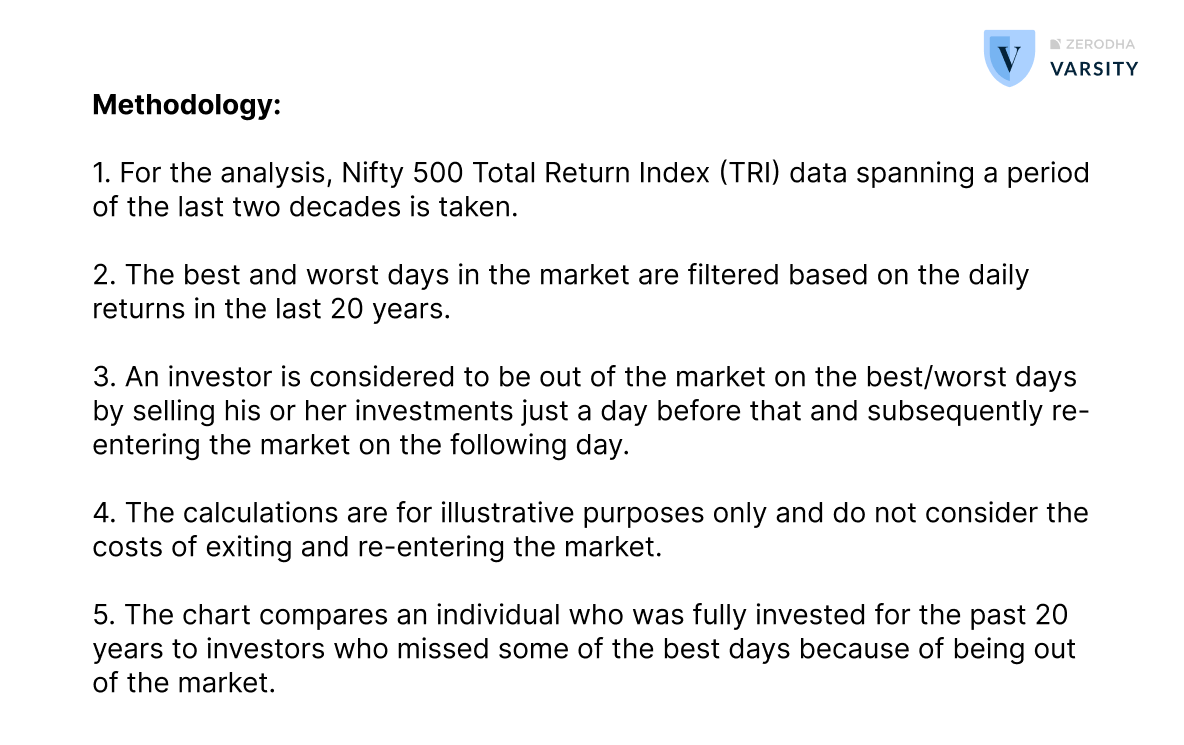December 1, 2023
What happens if you miss some of the best or worst days in the market?
Satya Sontanam | Behavioral Finance, Equity Investing
Last week, I had one of the most memorable experiences in my yoga journey. I was so close to performing a headstand (sirsasana), and it made my day. I have been practicing yoga for the last three years, but I always thought this inversion pose was an unattainable goal.
The day I can finally pull off a perfect headstand might not even be as thrilling as what I felt last week. Sometimes, realizing your ability to do something can be more fulfilling than the feeling of accomplishment itself. Don’t you think so?
As I began my work this week analysing the impact of missing some of the best days in the market on our investment, I couldn’t help but draw parallels between market returns and my experience with a headstand. In both cases, the best days of progress come after the days when we stumble the most.
In the last 20 years, some of the market’s best days (in terms of daily returns) occurred either during a correction phase or shortly after that. Well, it’s intuitive to think that markets bounce back stronger after a downturn. But what surprised me was that almost 8 of the 10 best days in the last 20 years were after the market correction.
Six of those best days fell within the Global Financial Crisis (GFC) period between January 2008 and March 2009. The other two days happened during the recovery phases of market correction in 2008 and 2020.
We expanded our analysis to the top 60 best market days over the past 20 years. Even in this scenario, nearly 40 out of the 60 best days occurred during or shortly after a correction phase in India.
You might wonder if it truly matters to miss just a handful of those great days in the long run. The answer is a resounding ‘yes’.
Let’s break it down. Suppose you invested Rs 1 lakh in October 2003 in a Nifty 500 index. If you stuck to your investment through the ups and downs for the entire 20-year period, it would have grown to Rs 18.6 lakh. However, if you missed just ten days in the last two decades (I repeat -just 10 days in almost 5,000 trading days), your investment would be worth only Rs 9 lakh. That’s a significant 52% lower than what you’d have had if you had stayed the course the whole time.
 Source: Nifty Indices; Past performance is no guarantee of future results
Source: Nifty Indices; Past performance is no guarantee of future results
And it’s not just here in India. JP Morgan Asset Management and other entities conducted this study on US markets (S&P 500 index), and guess what? The results are almost similar – https://tinyurl.com/5x6cejhx
You see, compounding has a certain magic to it. When you miss out on one of those big gain days in the market, it may not seem like a big deal at the moment. But every rupee you miss out on that day becomes a missed opportunity for future growth.
Now, contrast this with missing the big correction days. Tweak the above analysis by missing just 10 worst days (in terms of daily returns) in the last 20 years. You will be surprised to know the outcome. Your Rs 1 lakh invested in 2003 would have become a whopping Rs 48 lakh in 2023. In CAGR (compounded annual growth rate) terms, it would be 21.4% per annum. By missing out on market losses, you allow your investments to continue growing uninterrupted, maximizing the compounding effect.
Having said that, attempting to time the market can be tricky- not just the best days but also the worst days. The only thing that is in our control is not to succumb to loss aversion when markets correct. Staying away from the market due to the fear of losses could mean missing out on some of the best days. In equity investing, long-term commitment is often the key to building wealth over time.
It’s worth reminding ourselves that in markets, it is often our behaviour that determines the returns rather than the art of timing or picking that elusive multi-bagger stock. I can’t help but point out what my yoga teacher taught me about the headstand – it’s more about balance and focus (engaging the core) than the level of expertise in yoga.
Asset allocation
When life savings are exposed to market vagaries, staying calm is easier said than done. I mean, even the seasoned fund managers were playing it safe by holding more cash during that major market plunge in March 2020.
But if there’s one thing that could ease getting panicked is ‘asset allocation’. As cliche as it sounds, asset allocation has been a time-tested method to contain losses when markets go south. Think about it – having a diversified portfolio, having exposure to debt products to provide cushion and to meet short-term needs, and moving from equities to other stable assets a year or two before your financial goal timeline – can help you ride out market ups and downs.
When our life savings are not hanging on a single event, and we’ve got that cushion, we’re less likely to make impulsive and irrational decisions.
Of course, asset allocation may not give you the highest returns on your portfolio, but it does something even more important – it lets you have a sound sleep at night while your money keeps working for you.




Nice initiative, also 8 hours sleep is must for headstand as well as for markets.
Ha ha. Yes, certainly!
Happy reading, Ashay!